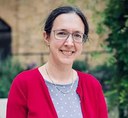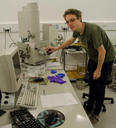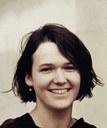
PervasID develop battery-free Radio Frequency IDentification (RFID) reader systems for automating inventory and asset tracking

PervasID develop battery-free Radio Frequency IDentification (RFID) reader systems for automating inventory and asset tracking

Join the discussion with Jana Skirnewskaja at the Cambridge Science Festival 2021

Wavefront shaping through multimode fibres to enable endoscopic photoacoustic tomography

Professor Tony Kenyon has been appointed to the Strategic Advisory Network (SAN) of the Engineering and Physical Sciences Research Council (EPSRC).

Congratulations to Rachel Oliver who has been named as one the Top 50 Women in Engineering: Sustainability by the Women's Engineering Society, recognising that she is a pioneer of new technologies for LEDs.

The National Tutoring Programme recruits, trains and places PhD researchers within UK schools to deliver academically rigorous programmes linked to their own research.

Journalist David Edmonds profiles UCL's Professor Polina Bayvel, who develops optical communications technology that brings us the internet and much more.

A novel concept for extracting information from spectra where traditional post-processing procedures fail, dubbed ‘software-defined spectroscopy’, offers a fresh approach to high-resolution terahertz spectroscopy. The new method implements an ‘optical comb’ and combines it with a programmable modulator, all using components from the optical internet.

UCL has reaffirmed its position as one of the world’s top research institutes in a series of recent world rankings.

Researchers at the University of Cambridge have developed a new way of imaging cells in 3D at 20nm resolution using single molecule light field microscopy (SMLFM), a new class of three-dimensional (3D) light field technology.

The world’s fastest data transmission rate has been achieved by a team of UCL engineers, led by Dr Lidia Galdino of The Optical Networks Group. The team reached an internet speed a fifth faster than the previous record.

Rachel Oliver, Professor of Materials Science at University of Cambridge, speaks to Real Scientists Nano about her research work on the small scale (nano) structure of gallium nitride in existing and new devices.

The paper examines the relationship between the three-dimensional structure of porous GaN distributed Bragg reflectors and their birefringence.

Journal paper on "Near‐Field Terahertz Spectroscopy: Noninvasive Near‐Field Spectroscopy of Single Subwavelength Complementary Resonators" by Lucy Hale et. al. is the editor’s choice in the Journal of Laser & Photonics Reviews.

Eleni Bohacek, PhD student on the IPES CDT, will present a poster at the EPC Annual Congress Awards 2020

PhD student, Miguel El Guendy, and technology pioneers VividQ discuss the mass adoption of Augmented Reality using computer generated holography on The Versatalist podcast

Another successful Viva result for the EPSRC Centre for Doctoral Training in Integrated Photonic and Electronic Systems.

University of Cambridge and UCL have been ranked as two of the world’s top 10 universities in the QS Global world rankings, at #7 and #8 respectively.

Professor Polina Bayvel, head of ONG at UCL, spoke to BBC Radio 4 about her pioneering journey through the ever-evolving field of optical communications.

George Roberts, PhD student on the IPES CDT, has secured a Fellowship to aid development of his data transmitter technology and help unlock its commercial potential.

CDT PhD students Lucy Hale and Thomas Gerard were recognised at The Barlow Memorial Lecture this year. The event celebrates the research of the EEE Department with a poster display showcasing the current work of Masters students and PhD researchers.

Conception X is a nine-month entrepreneurship programme for PhD students designed to help them launch deeptech startup based on their research in science or engineering. Four teams each received a £5k award to recognise their progress and contribute to their next steps as founders.

UCL is opening its doors on Wednesday 4th December for Graduate Open Day!

Congratulations to Raymond Smith, a PhD student on the Photonics CDT at University of Cambridge, who has co-authored a paper in the international journal Physical Review.

Professor Robert Killey, member of the EEE Optical Networks Group (ONG), collected the award at a prestigious conference.

Graduates from the Centre’s four year PhD programme will lead new industries combining electronic and photonic systems. Following the Government's announcement on 4th February 2019, the new CDT is recruiting for MRes/PhD students now!

Following a CDT competition, CDT PhD students Adam Funnell and Tom Gerard from UCL Optical Networks Lab have had their winning designs turned into new exhibits to communicate the story of global communications to the general public at Cornwall's Telegraph Museum.

CDT PhD student Eleni Bohacek recently exhibited her experimental Mars Rover that she has been building based on a disability scooter at the internationally famous Farnborough Air Show.

Jounal paper on "Switching of Radiation Force on Optically Trapped Microparticles through Photochromic Reactions of Pyranoquinazoline Derivatives" is recognised as ACS Editors Choice in the Journal of Physical Chemistry.

Marcus Fantham, a PhD student at Cambridge presented his 3D data sharing software tool, published in Nature Photonics last year, at a major conference in Germany and Singapore to the microscopy academic community. He now also has 2 recent Nature Communications papers!